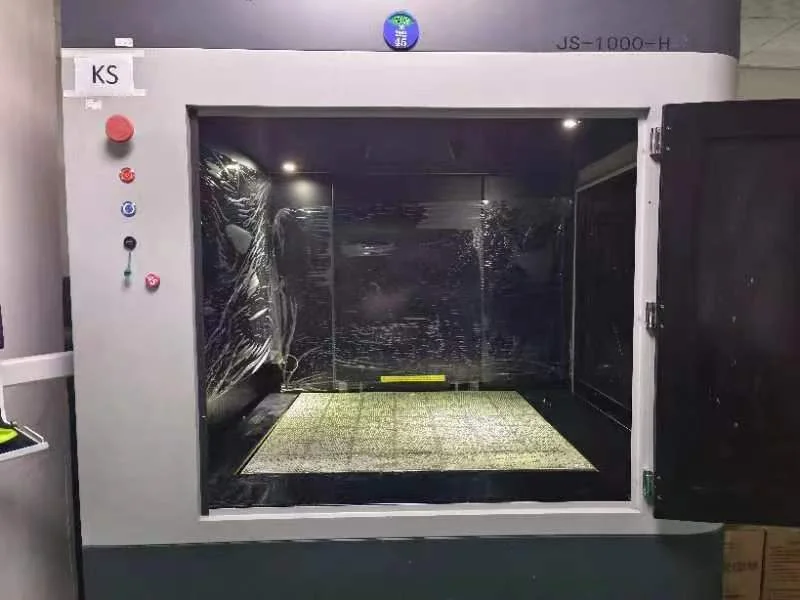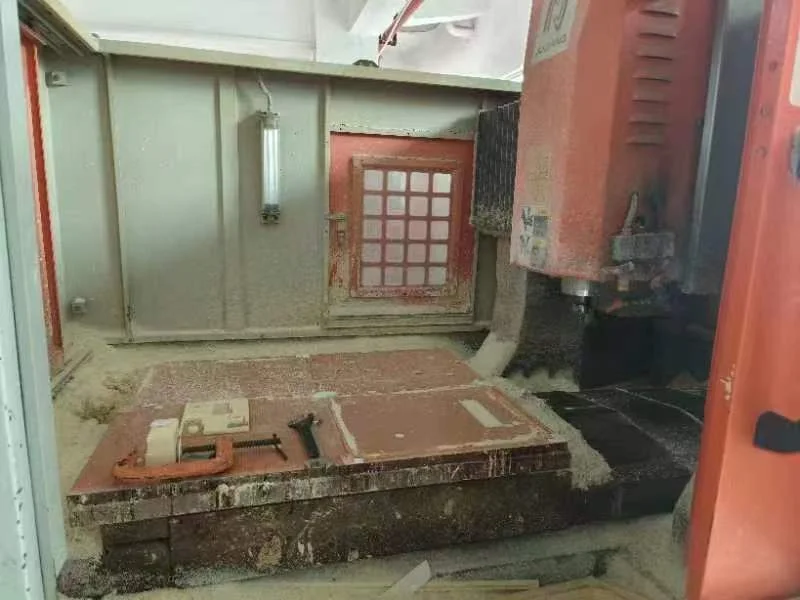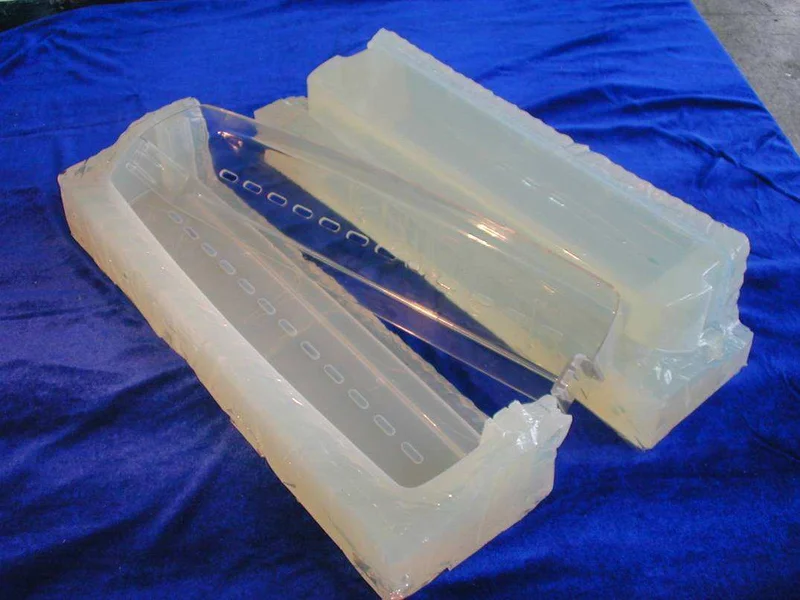Technologies in China Rapid Prototyping Industry: A Comprehensive Look
Introduction
In 1986, American inventor Charles (Chuck) Hull filed a patent for Stereolithography (SLA). The first SLA machine was created in 1987, marking the beginning of what we now refer to as 3D printing or rapid prototyping technology. However, it wasn’t until the mid-2000s that 3D printing began to gain widespread popularity.1 Around 2010, Chinese companies started leveraging this technology, providing industrial-level rapid prototyping services. By the end of 2023, the market size is expected to surpass $11 billion, signifying its swift growth and immense potential. Today, the term ‘rapid prototyping technologies’ encompasses not just 3D printing, but also other techniques used to swiftly create metal and plastic prototypes.

Technologies in China Prototyping Industry
Typical rapid prototyping services provided by a prototyping company in China include CNC machining, 3D printing, Urethane casting (vacuum casting), and rapid tooling (rapid mold manufacturing).
CNC Machining
Rapid prototyping companies in China use CNC machining as a crucial tool. This includes both traditional CNC machines and specialized prototyping machines. A notable example is the plastic prototyping CNC milling machine, specifically designed for plastic prototype creation.
Unlike its more expensive counterparts with auto tool magazines, this machine contains a single tool holder. The manual tool switch feature makes it more economical for single-unit prototyping. As it’s primarily designed for plastic prototyping, it doesn’t require high power for hard cutting.
The machine employs cost-effective servo motors or, at times, step motors. It’s designed to achieve a tolerance of +/- 0.05mm, which suffices for most plastic prototypes.
There are also other types of CNC machines designed for specific prototyping tasks. These specialized machines significantly reduce prototyping costs, making them an efficient solution for various prototyping needs.

3D Printing
Without question, Stereolithography (SLA) is the most widely used 3D printing technology in China’s prototyping industry. However, it’s not the only method available. Several other techniques, including Selective Laser Sintering (SLS), Selective Laser Melting (SLM), Multi Jet Fusion (MJF), Fused Deposition Modeling (FDM), and Wire Arc Additive Manufacturing (WAAM), are also employed by different prototyping companies across China.
In the case of SLA, it’s not uncommon for a prototyping company to house dozens of SLA machines of varying sizes. The large-scale nature of China’s industry makes it efficient to maximize these machines’ capacity, often running them continuously, day and night. This incredible efficiency translates into impressive turnaround times, with the typical lead time for SLA in China being just one day.
Such rapid production capabilities, coupled with a wide range of available technologies, underscore China’s position as a global leader in the prototyping industry.
Urethane Casting
This process involves pouring or injecting polyurethane resins, curatives, and additives into a mold, usually made of silicone. Urethane casting is an effective way to bridge the gap from prototype to mass production, offering high-quality plastic cast parts in small to medium quantities. It’s also known as vacuum casting, as the process often takes place under a vacuum.
However, it’s worth noting that urethane casting is labor-intensive. From the creation of the silicone mold to the post-processing steps, almost every stage requires manual work. This factor might increase costs in regions with high labor rates.
Yet, in countries like China, where labor costs are relatively low, urethane casting emerges as a cost-effective prototyping technology. Thus, the economics of location plays a significant role in determining the viability and efficiency of this manufacturing method.

Rapid Tooling (Rapid Mold Manufacturing)
Raid tooling or rapid mold manufacturing simply means making injection molds faster and cheaper than traditional molds. The trade-off is fewer mold life cycles. Traditional mold life cycles are 300k ~1m while rapid mold’s life cycles are a few thousand to 30k. Rapid tooling in China leverages the country’s large-scale industrial nature. Two key elements drive the speed and efficiency of ‘rapid tooling’.
1. Recycling of Molds: In China, countless molds are created, used, and recycled. It isn’t surprising that a market for trading used or outdated molds has emerged. For those who require affordable molds and don’t need numerous injection rounds, these recycled mold frames become a cost-effective solution.
2. Specialization: The sheer volume of molds being made in China daily has led to an expansive mold-making industry. This scale allows for specialization, with companies focusing on almost every accessory. For instance, a mold maker no longer needs to purchase material, process it to the right size, and create the mold core. They simply need to provide the supplier with the size, hardness, and material specifications. Within a day, the mold core is delivered. This highly specialized and sophisticated supply chain enables the ‘rapid’ in ‘rapid tooling’.
Another effective strategy in rapid tooling involves the use of relatively soft materials for mold cores. The choice of material is dictated by the required lifecycle of the mold.
For instance, if the mold is only needed for a few thousand shots, an aluminum alloy can be used to construct the mold core. However, if around 30,000 shots are required, unhardened steel becomes the preferred choice for the mold core.
The rationale behind this lies in the machining process. CNC machining, which is faster and more cost-effective, is not compatible with hardened steels. In such cases, Electrical Discharge Machining (EDM) must be used, which is a more time-consuming and costly process.
Conversely, CNC machining can easily handle unhardened steel and aluminum alloys. It can take just hours of CNC machining a mold core, compared to the days required for EDM. As such, using softer metals can significantly reduce costs and expedite the mold-making process.
Rapid Prototyping Technologies: Application and Usage
Each rapid prototyping technology has its unique strengths and is suited to specific applications. Here’s a general guide on when and where to apply each technology:
CNC Machining: This method is ideal for creating prototypes that require high precision, intricate features, or specific materials that can’t be 3D printed. It is often applied in industries such as aerospace, automotive, and medical devices.
3D Printing: This is best for complex geometric designs, small-scale production, and projects with tight deadlines due to its quick turnaround time. It’s frequently used in the fields of product design, architecture, and education.
Urethane Casting (Vacuum Casting): This process is suited for producing small to medium quantities of functional plastic parts. It’s typically used when parts require specific material properties like color, texture, or flexibility that aren’t available in 3D printing or CNC machining.
Rapid Tooling (Rapid Mold Manufacturing): This is beneficial when you need to produce a significant number of parts quickly, especially for testing market response or for short-run production. It’s often used in the consumer goods industry, automotive sector, and medical devices.
It’s important to note that these are general guidelines and the choice of rapid prototyping technologies depends on various factors such as project requirements, budget, timeline, and material properties.
The Advantages of Rapid Prototyping in China: An In-Depth Look
China’s rapid prototyping technologies have revolutionized the manufacturing industry, offering several key benefits that make it an attractive choice for businesses worldwide.
Affordability
One of the primary advantages of rapid prototyping in China is its cost-effectiveness. The lower labor and material costs, coupled with efficient production methods, allow Chinese manufacturers to offer competitive pricing. This affordability extends beyond basic rapid prototyping to include services such as surface treatment and heat treatment, contributing to a reduced overall cost for the client.
Speed
Chinese manufacturers emphasize rapid prototyping, enabling them to deliver products faster and reduce time-to-market. This speed is facilitated by an extensive industrial support chain, which ensures streamlined processes from design to delivery. Whether you need a single prototype or a large batch, China’s rapid prototyping sector can accommodate your requirements promptly.
Reliability
The reliability of Chinese prototypes is another significant benefit. Advanced technologies, stringent quality control measures, and a commitment to precision ensure that the prototypes consistently meet high standards. The prototypes can be used for functional testing and validation, and even as a marketing tool to showcase the product’s features and benefits.
Versatility and Capacity
From small startups to large enterprises, businesses of all sizes can benefit from China’s rapid prototyping services. The industry offers a wide range of services tailored to different business scales, ensuring that all clients, regardless of size, receive the support they need.
Moreover, China’s prototyping industry boasts a vast overall capacity. With a multitude of manufacturers and advanced machinery, they can handle large-scale projects without compromising on speed or quality.
In conclusion, prototyping in China offers a compelling blend of affordability, speed, reliability, versatility, and capacity. These advantages make it a formidable player in the global manufacturing landscape, providing businesses with an efficient and cost-effective solution for their prototyping needs.
CapableMachining.com: Leading the Way in Prototyping Solutions
At CapableMachining.com, we offer top-tier prototyping solutions that leverage these cutting-edge technologies. Our commitment to quality, speed, and affordability sets us apart. Trust CapableMachining.com to turn your ideas into reality with precision and efficiency.
We utilize a range of techniques, including 3D printing, Urethane Casting, CNC machining, Rapid Tooling, Injection Molding, and Sheet Metal fabrication, to streamline our prototyping processes and optimize low-volume manufacturing services.
The CapableMachining.com Advantage
One of the significant challenges in rapid prototyping is effective communication. The language barrier often makes it difficult to find professionals in China prototype manufacturers who excel in both technical expertise and language proficiency. More often than not, you may encounter customer service representatives who either lack engineering knowledge or struggle with language skills. This can lead to misunderstandings around technical issues. However, at CapableMachining, we have bridged this gap. Our team is composed of individuals who are not only proficient in language but also have a strong background in engineering. This unique combination enables us to deliver faster and superior-quality prototypes, and provide the best rapid prototyping services.
Client Satisfaction
Clients who have partnered with CapableMachining.com testify to the company’s professionalism, expertise, and commitment to delivering high-quality prototypes within agreed timelines. They appreciate the company’s proactive approach to identifying and solving problems, as well as our ability to deliver cost-effective solutions without compromising on quality.
Conclusion
Now is the time to leverage the benefits of prototyping in China with CapableMachining.com. Reach out today to discuss your prototyping needs and discover how CapableMachining.com can deliver quality results, cost-effectively and efficiently. Experience the difference that professional expertise and sophisticated technology can make in your prototyping process.